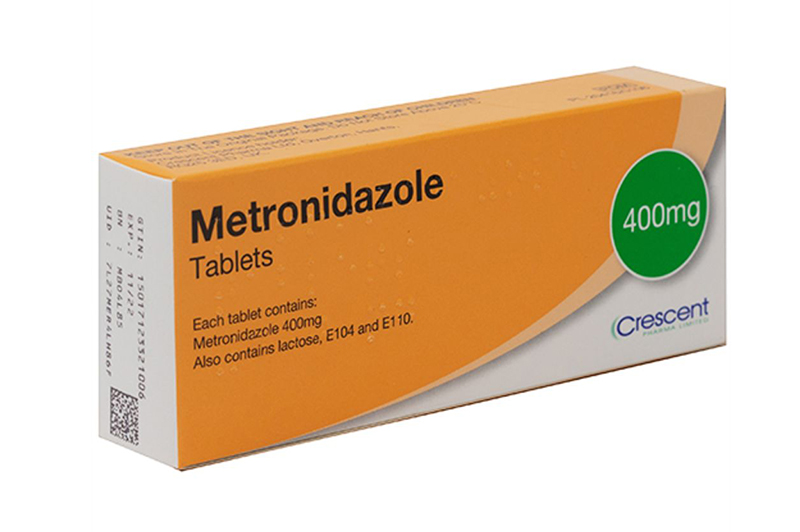
Metronidazole is a derivative of 5-nitroimidazole. The mechanism of action of metronidazole is the biochemical reduction of the 5-nitro group of metronidazole by intracellular transport proteins of anaerobic microorganisms and protozoa. The recovered 5-nitrogroup of metronidazole interacts with DNA of microorganism cell by inhibiting the synthesis of their nucleic acids causing death of the microorganisms.
Metronidazole is active against Trichomonas vaginalis, Entamoeba histolytica, as well as against gram-negative anaerobic bacteria Bacteroides spp. (including B. fragilis, B. distasonis, B. ovatus, B. thetaiotaomicron, B. vulgatus), Fusоbacterium spp. and some gram-positive anaerobic bacteria (sensitive strains of Eubacterium spp., Clostridium spp., Peptococcus niger, Peptostreptococcus spp.). The minimum inhibitory concentration (MIC) for these strains is 0.125-6.25 μg/mL. In combination with amoxicillin, it is active against Helicobacter pylori (amoxicillin inhibits development of resistance to metronidazole).
Therapeutic indications
- Infections caused by Bacteroides spp. (including Bacteroides fragilis, Bacteroides distasonis, Bacteroides ovatus, Bacteroides thetaiotaomicron, Bacteroides vulgatus): infections of bones and joints, central nervous system (CNS) infections, including meningitis, brain abscess, bacterial endocarditis, pneumonia, empyema and pulmonary abscess, sepsis;
- infections caused by species of Clostridium spp., Peptococcus and Peptostreptococcus: infections of the abdominal cavity (peritonitis, liver abscess), infections of the pelvic organs (endometritis, abscess of the fallopian tubes and ovaries, vaginal fornix infection);
- pseudomembranous colitis (associated with use of antibiotics);
- gastritis or duodenal ulcer caused by Helicobacter pylori;
- prevention of post-surgical complications (especially surgery on the colon, pararectal area, appendectomy, gynecological surgery).






